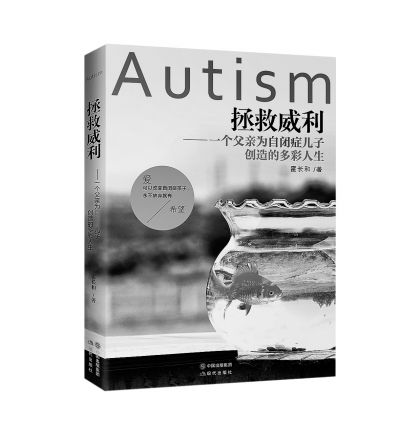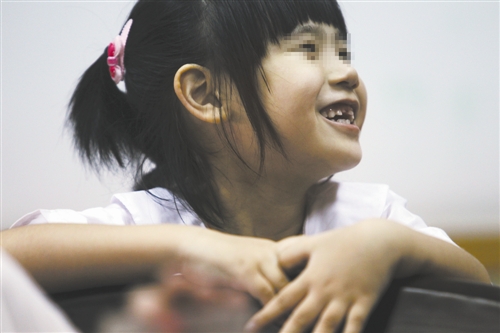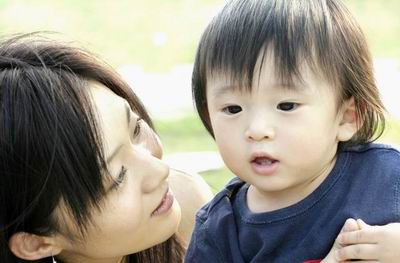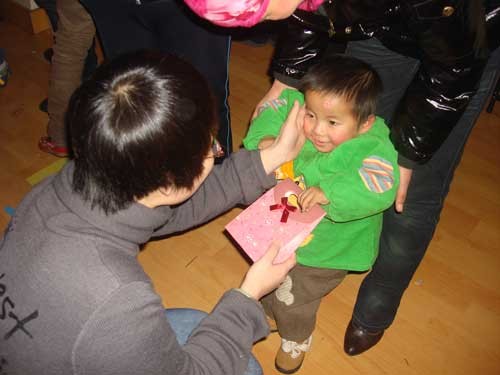参考书目
一、中文部份
宋维村(民85)。自闭症与配对组智能不足儿童之相互注意协调能力、情绪分享能力、语言发展之追踪比较研究。 国科会奖助报告,NSC-81-0301- H-002-502。
姜忠信(民89)。自闭症儿童意图能力之研究。国立台湾大学心理学研究所博士论文(未出版)。
姜忠信与宋维村(出版中)。自闭症患者的精神病理学。台湾精神医学。
二、英文部份
Adamson, L. B. & Bakeman, R.(1985). Affect and attention: infants observed with mothers and peers, Child Development, 56, 582-593.
Adamson, L. B.,& McArthur, D.(1995). Joint attention, affect and culture. In C.Moore,& P. J. Dunham,(Eds.), Joint attention: Its origins and role in development.(pp. 205-222). New Jersey: Lawrence Erlbaum.
Aldridge, M. A., Stone, K.R, Sweeney, M.H. & Bower, T.G.R.(2000). Preverbal children with autism understand the intention of others. Development Science, 3(3), 294- 301.
American Psychiatric Association(1994). Diagnostic and statistical manual of mental disorders (4thed.). Washington DC: Author.
Attwood, A., Frith, U., & Hermelin, B.(1988). The understanding and use of interpersonal gestures by autistic and Downs Syndrome children. Journal of Autism and Pervasive Disorders, 18, 241- 257.
Bakeman, R., & Adamson, L. B.(1984). Coordinating attention to people and objects in mother-infant and peer-infant interaction. Child Development, 55, 1278-1289.
Bakeman, R., & Adamson, L. B.(1984). Infants’ conventionalized acts: gestures and words with mothers and peers. Infant Behavior and Development, 9, 215-230.
Baldwin, D. A.(1995). Understanding the link between joint attention. In C. Moore & P. J. Dunham,(Eds.), Joint attention: Its origins and role in development.(pp.131-158). New Jersey: Lawrence Erlbaum.
Baron-Cohen, S.(1989). Joint attention deficits in autism: towards a cognitive analysis. Development and Psychopathology, 1, 185-189.
Baron-Cohen,S.(1993) From attention- goal psychology to belief-desire psychology: the development of a theory of mind, and its dys- function. In Baron-Cohen, S., Tager-Flusberg, H.,& Cohen, D. J. (Eds.), Understanding other minds:Perspective from autism. (pp.59-82). New York: Oxford University Press.
Baron-Cohen, S., Cox, A., Baird G., Swettenham, J. Nightingale, N., Drew A., & Charman, T.(1996). Psychological markers in the detection of autism in infancy in a large population. British Journal of Psychiatry, 168, 158-163.
Bates, E.(1979). Intention, conventions, and symbols. In E. Bates(Ed.), The Emergence of symbols: Cognition and communication in infant.(pp. 33-68). New York: Academic.
Bates, E., Benigni, L., Bretherton, I., Camaioni, L.,&Volterra, V. (1979). Cognition and communication from nine to thirteen months: correlational findings. In E. Bates (Ed.), The emergence of symbols: Cognition and communication in infant.(pp. 69-140). New York: Academic.
Bellagamba, F., & Tomasello, M. (1999). Re-enacting intended acts: comparing 12- and 18-month-olds. Infant Behavior and Develop- ment, 22(2), 277-282.
Bretherton, I., McNew, S., & Beeghly- Smith, M.(1981). Early person knowledge as expressed in gestural and verbal communi- cation: when do infants acquire a “ theory of mind”? In M. E. Lamb & L. R. Sherrod (Eds.), Infant social cognition: Empirical and theoretical considerations. Hillsdale, NJ: Erlbaum.
Bruner, J. & Sherwood, V.(1983). Thought, language, and inter- action in infancy. In J. Call, E. Calenson, &R. Tyson(Eds.), Fron- tiers of infant psychiatry (pp. 38-55). New York: Basic Books.
Bruner, J.(1983). Child‘s Talk. New York: Norton.
Butterworth, G. & Jarrett, N.(1991). What minds have in common is space: Spatial mechanisms serving joint attention in infancy. British Journal of Developmental Psychology, 9, 55-72.
Butterworth, G.(1995). Origins of mind in perception and action. In C. Moore,& P.J. Dunham(Eds.), Joint attention: Its origins and role in development.(pp.29-40). New Jersey: Lawrence Erlbaum.
Butterworth, G., & Cochran, E.(1980). Towards a mechanism of joint visual attention in human infancy. International Journal of Behaviral Development, 3, 253- 272.
Butterworth, G., & Grover, L.(1990). Joint visual attention, manual pointing, and preverbal communi- cation in human infancy. In M. Jeannerod (Ed.), Attention and performance ⅩⅢ(pp.605-624). Hillsdale, NJ.: Lawrence Erlbaum Associates.
Carpenter, M., Akhtar, N., & Tomasello, M.(1998). Fourteen-through 18 month-old infants differentially imitate intentional and accidental action. Infant Behavior and Development, 21(2), 315-330.
Carpenter, M., Nagell, K., & Tomasello, M.(1998). Social cognition, joint attention, and communicative competence: from 9 to 15 months of age. Monographs of the Society for Research in Child Development, Serial No. 255, Vol. 63, N0. 3.
Carpenter, M., Pennington, B.F., & Rogers, S.J. (Submitted). Under- standing of others' intention in children with autism.
Charman, T.(1998). Specifying the nature and course of the joint attention impairment in autism in the preschool years. Autism, Vol. 2, No.1, 61-79.
Chiang, C.H., & Soong, W.T. (2001). A comparative study of intentional abilities among children with autism, mental retardation and normal development. Paper pre- sented in 2001 SRCD conference, Miniapolis, Minnesot, USA.
Corkum, V, & Moore, C.(1998). The origins of joint visual attention in infants. Developmental Psy- chology, 34, 28-38.
Corkum, V. & Moore, C.(1995). Development of joint visual attention in infants. In C.Moore, & P. J. Dunham(Eds.), Joint atten- tion: Its origins and role in development.(pp. 61-84). New Jersey: Lawrence Erlbaum.
Curcio, F.(1978). Sensorimotor function- ing and communication in mute autistic children. Journal of Autism and Developmental Disorder, 8, 281-292.
DiLavore, P. & Lord, C.(1995). Do you see what I see? requesting and joint attention in young autistic children. Poster presentation at Biennial Conference of the Society for Research in Child Development, Indianapolis.
Hellreigel, C., Tao, L., Pickles, A., Elliott, M. J., Spencer, A., DiLavore, P., & Lord, C.(1995). The effect of context on nonverbal social behaviors of very young autistic children. Poster presentation at Biennial Conference of the Society for Research in Child Development, Indianapolis.
Howlin, P., Baron-Cohen, S., & Hadwin, J.(1999). Teaching children with autism to mind-read. West Sussex, England: Wiley Press.
Kanner, L.(1943). Autistic disturbances of affective contact. The Nervous Child, 2, 217-250.
Kasari, C., Sigman, M., Mundy, P., & Yirmiya, N.(1990). Affective sharing in the context of joint attention interaction of normal, autistic and mentally retarded children. Journal of Autism and Developmental Disorders, 20, 87-100.
Leekam, S., Baron-Cohen, S., Perrett, D., Milders, M., & Brown, S.(1997). Eye-direction detection: a dissoci- ation between geometric and joint attention skills in autism. British Journal of Developmental Psychology, 15, 77-95.
Lempers, J. D.(1979). Young children‘s production and comprehension of nonverbal deictic behaviors. Journal of Genetic Psychology, 135, 93-102.
Lord, K. & Rutter, M.(1994). Autism and pervasive developmental disorders. In M. Rutter, E. Taylor, & L. Hersov (Eds.), Child and adol- escent psychiatry. (pp.569-593). London: Blackwell Scientific Publication.
Loveland, K. A. & Landry, S. H.(1986). Joint attention and language in autism and developmental language delay. Journal of Autism and Developmental Disorders, 16, 335-349.
McArthur, D. & Adamson, L. B.(1996). Joint attention in preverbal children: autism and develop- mental language disorder. Journal of Autism and Development Disorders ,Vol.26, No. 5, 481-496.
McEvoy, R. E., Rogers, S. L. & Pennington, B. F.(1993). Execu- tive function and social communi- cation deficits in young autistic children. Journal of Child Psy- chology and Psychiatry, Vol. 34, No. 4, 563-578.
Moore, C. & Corkum, V.(1998). Infant gaze following based on eye direction. British Journal of Developmental Psychology, 16, 495-503.
Morissette, P., Ricard, M., & De'carie, T. G.(1995). Joint visual attention and pointing in infancy: A longi- tudinal study of comprehension. British Journal of Developmental Psychology, 13, 163-175.
Mundy, P. & Hogan, A.(1996). Early social communication scales (ESCS)(A preliminary manual for the abridged).
Mundy, P.(1995). Joint attention and social-emotional approach be- havior in children with autism. Development and Psychopa- thology, 7, 63-82.
Mundy, P. & Gomes, A. (1998), Individual difference in joint attention skill development in second year. Infant Behavior and Development, 21(3), 469-482,
Mundy, P., Sigman, M., & Kasari, C.(1990).A longitudinal study of joint attention and language development in autistic children. Journal of Autism and Develop- ment Disorders , Vol.20, No.1, 115-128.
Mundy, P., Sigman, M., & Kasari, C. (1994). Joint attention, develop- mental level, and symptom presentation in young children with autism. Development and Psychopathology, 6, 389-401.
Mundy, P., Sigman, M., Ungerer, J. A. & Sherman, T.(1986). Defining the social deficits in autism: The contribution of nonverbal communication measures.Journal of Child Psychology and Psy- chiatry, 27, 657-669.
Murphy, C. M. & Messer, D. J.(1977). Mothers, infants and pointing: a study of a gesture. In H. R. Schaffer (Ed.), Studies in mother- infant interaction. New York: Academic.
Pennington, B. F., Rogers, S. J., Bennetto, L., Griffith, E. M., Reed, D. T., & Shyu, V.(1997). Validity tests of the executive dysfunction hypothesis of autism. In J. Russell (Ed.), Autism as an executive disorder (pp.143-178). Oxford: Oxford University Press.
Phillips, W., Baron-Cohen, S., Rutter, M.(1992). The role of eye-contact in goal detection: evidence from normal toddlers and children with autism or mental handicap, Development and Psychopa-
thology, 4, 375-384.
Rogers, S. J. & Pennington, B. F.(1991). A theoretical approach to the deficits in infantile autism. Development and Psychopa- thology, 3, 137-162.
Rogers, S.J. (1999). Aan examination of the imitation deficit in autism. In J. Nadel & G. Butterworth (Eds.), Imitation in infancy (PP. 254- 283). Cambridge: Cambridge University Press.
Rollins, P. R., Wambacq, I., Dowell, D., Mathews, L., & Reese, P.(1998). An intervention technique for children with autisitc spectrum disorder:joint attentional rountines. Journal of Communication Dis- orders, 31, 181-193.
Ross, H. S. & Lollis, S. P.(1987). Communication within infant social games. Developmental Psy- chology, 23(2), 241-348.
Scaife, M., & Bruner, J. S.(1975). The capacity for joint visual attention in infancy. Nature, 253, 265-266.
Seibert, J. M., Hogan, A. E., & Mundy, P. C.(1982). Assessing interactional competencies: The early social- communication scales. Infant Mental Health Journal, 3, 244- 245.
Sigman, M., & Ruskin, E. (1999). Social Competence in children with autism, Down syndrome, and other development delays: Mono- graph of the society for Research in Child Development. Serial No.256, Vol.64, No.1.Chicago, IL: University of Chicago Press.
Sigman, M., Kasari, C., Kwon, Jung-Hye, & Yirmiya, N.(1992). Response to the negative emotions of others by autistic, mentally retarded, and normal children. Child Develop- ment, 63, 796-807.
Sigman, M., Mundy, P., Sherman, T., & Ungerer, J. A.(1986). Social interactions of autistic, mentally retarded and normal children with the caregivers. Journal of child Psychology and Psychiatry, 27, 647-669.
Stern, D.(1985). The interpersonal world of the infant. New York: Basic Books.
Stone, W L.., Ousley, O. Y., Yodar, P. J., Hogan, K. L., & Hepburn, S. L.(1997). Nonverbal communi- cation in two- and three-year-old children with autism. Journal of Autism and Developmental Disorders, Vol.27, No. 6, 677-696.
Tomasello, M. & Barton, M.(1994). Learning words in nonostensive contexts. Developmental Psy- chology, 30, 639-650.
Tomasello, M. & Farrar, J.(1986). Joint attention and early language. Child Development, 57, 1454- 1463.
Tomasello, M. & Kruger, A.(1992). Joint attention on actions: Acquiring verbs in ostensive and nono- stensive contexts. Journal of Child Language, 19, 311-333.
Tomasello, M.(1995). Joint attention as social cognition. In C. Moore,& P.J. Dunham(Ed.), Joint attention: Its origins and role in develop- ment. (pp.103-130). New Jersey: Lawrence Erlbaum.
Trevarthen, C. & Hubley, P.(1978). Secondary intersubjectivity: confi- dence, confiding and acts of meaning in the first years In Lock(Ed.), Action, gesture, and symbol: The emergence of language. New York: Academic.
Werner, H., & Kaplan, B.(1963). Symbol formation. New York: Wiley.
Wetherby,A.& Prutting, C.(1984). Profile of communicative and cognitive- social abilities in autistic children. Journal of Speech and hearing Research, 27, 364-377.
The Joint Attention Development in Children with Autism: A Critical Review
Chung-Hsin Chiang, Ph.D.*
Wei-Tsuen Soong, M.D**
National Chung-Cheng University*
National Taiwan University**
ABSTRACT
Autism is a development disorder of abnormal brain development. Among many hypotheses, explaining psychopathology of autism, the Joint Attention Deficit hypothesis offers most plausible explanation. This paper comprehensively reviewed the development of joint attention in children with autism and in normal children. The authors commented on the inconsistency of JA studies on autism and suggested the following directions for future research: 1.to explore the role of intentionality in JA; 2.to carry out longitudinal studies of JA; 3.to investigate individual differences in joint attention among children with autism; 4. to examine the relationship between the JA deficit hypothesis and other hypotheses, e.g., theory-of-mind deficit, executive function deficit.
Keywords : joint attention, autism, normal infants
- 发表跟帖
- 相关文章
- 热门文章
 家长一点通:
家长一点通:



























